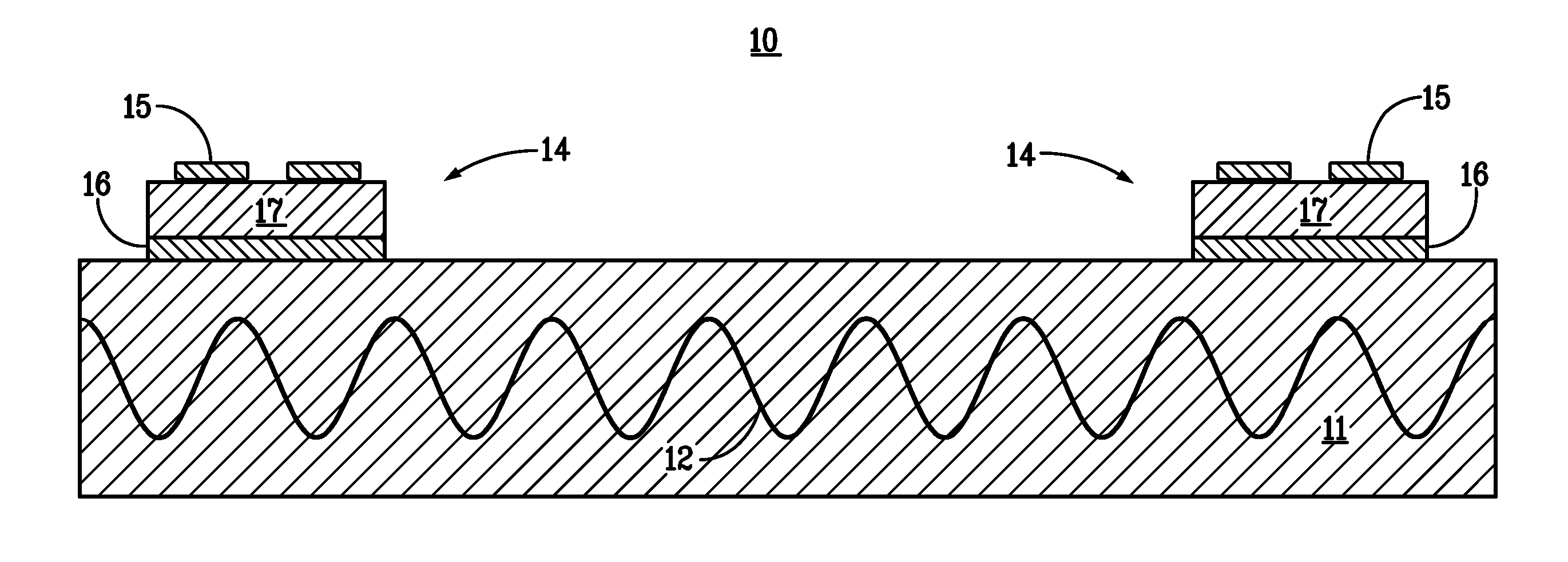Lateral acoustic wave resonator comprising a suspended membrane of low damping resonator material
a resonator material and suspension membrane technology, applied in piezoelectric/electrostrictive/magnetostrictive devices, piezoelectric/electrostriction/magnetostriction machines, electrical instruments, etc., can solve the problems of limiting the performance of zno based resonator designs, limiting the application of high material damping, and limiting the phonon-phonon damping limit. , the effect of minimizing the influence o
- Summary
- Abstract
- Description
- Claims
- Application Information
AI Technical Summary
Benefits of technology
Problems solved by technology
Method used
Image
Examples
Embodiment Construction
[0030]A very high-Q, low insertion loss resonator can be achieved by storing many overtone cycles of a lateral acoustic wave (i.e., Lamb wave) in a lithographically defined suspended membrane comprising a low damping resonator material. A similar overtone resonator approach for increasing Q has been reported for thickness-mode BAW resonators. See G. R. Kline et al.; and D. S. Bailey et al., “Frequency stability of high overtone bulk acoustic resonators,”IEEE Ultrasonics Sym., 509 (1990). The low damping resonator material can comprise a non-piezoelectric material, such as silicon carbide, sapphire, yttrium aluminum garnet, or diamond. The lateral overtone acoustic wave resonator can be electrically transduced by AIN piezoelectric couplers which have previously demonstrated low impedance transduction. See R. H. Olsson III et al., IEEE Freq. Cntl. Sym., 412 (2007). Similarly, other high-quality piezoelectric transducers, such as lead zirconate titanate, lithium niobate, zinc oxide, or...
PUM
 Login to View More
Login to View More Abstract
Description
Claims
Application Information
 Login to View More
Login to View More - R&D
- Intellectual Property
- Life Sciences
- Materials
- Tech Scout
- Unparalleled Data Quality
- Higher Quality Content
- 60% Fewer Hallucinations
Browse by: Latest US Patents, China's latest patents, Technical Efficacy Thesaurus, Application Domain, Technology Topic, Popular Technical Reports.
© 2025 PatSnap. All rights reserved.Legal|Privacy policy|Modern Slavery Act Transparency Statement|Sitemap|About US| Contact US: help@patsnap.com



